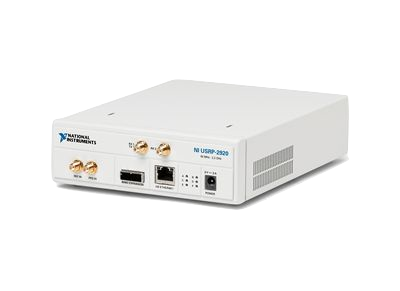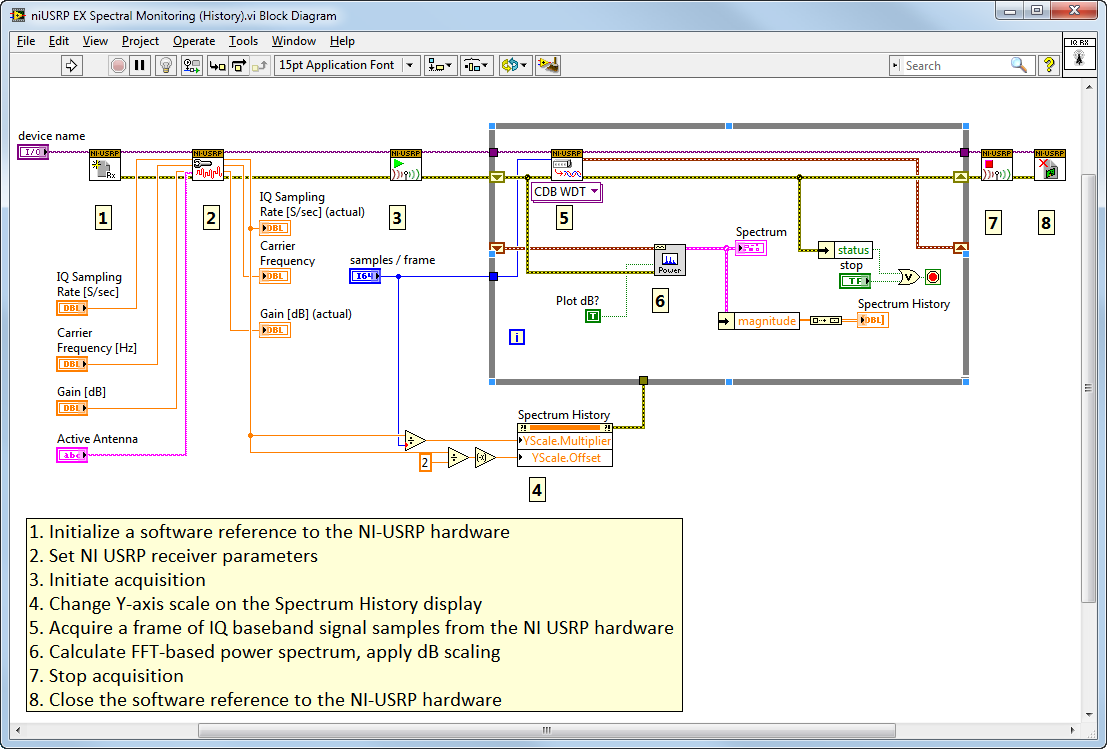Laboratory
This course aims to translate theory in the classroom into practice through experimentation on a real hardware platform. Today, there seems no better platform than the Software Defined Radio (SDR) to achieve this goal. A laboratory with state-of-the-art SDR hardware equipment has been equipped in collaboration with National Instruments with National Instruments Universal Software Radio Peripheral (NI USRP) and high quality and repeatable RF and digital signal processing tools in NI LabVIEW.NI USRP

The Universal Software Radio Peripheral (USRP) [1] [2] products are computer-hosted software radios. This is a list of some of the applications the USRP has been used for:
- RFID reader;
- testing equipment;
- a cellular GSM base station;
- a GPS receiver;
- an FM radio receiver;
- an FM radio transmitter.
For additional information on potential projects, check out the website's projects page.
LabView

LabVIEW (Laboratory Virtual Instrument Engineering Workbench) [1] [2] is a system-design platform and development environment for a visual programming language developed by National Instruments. The programming language used in LabVIEW, also referred to as G, is a data flow programming language. Execution is determined by the structure of a graphical block diagram (the LV-source code) on which the programmer connects different function-nodes by drawing wires. These wires propagate variables and any node can execute as soon as all its input data become available.
A key of LabVIEW over other development environments is the extensive support for accessing instrumentation hardware. Drivers and abstraction layers for many different types of instruments and buses are included or are available for inclusion. These present themselves as graphical nodes. The abstraction layers offer standard software interfaces to communicate with hardware devices. The provided driver interfaces save program development time.
Given the graphical nature of LabVIEW, it provides sufficient easiness of usage for non-expert programmers.

